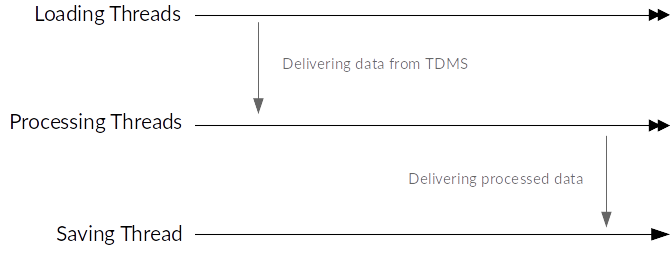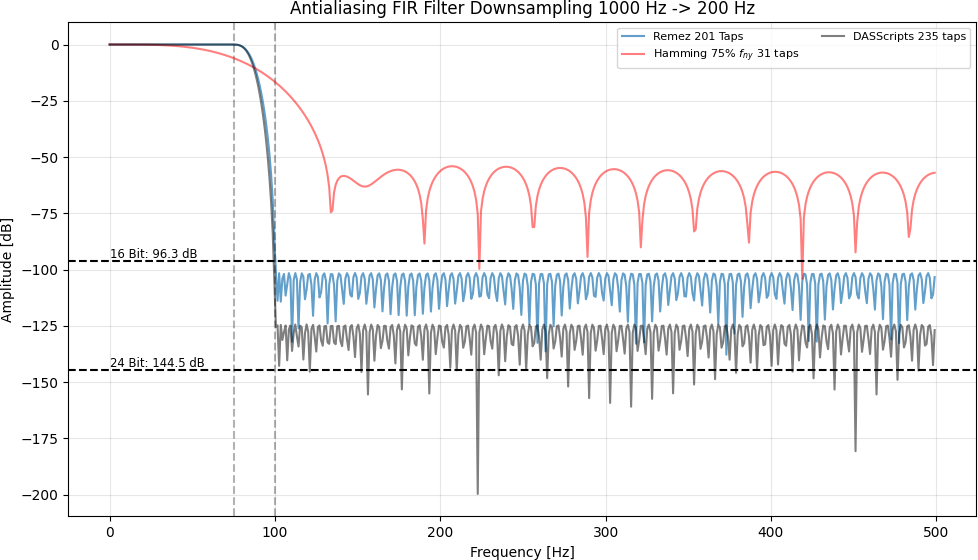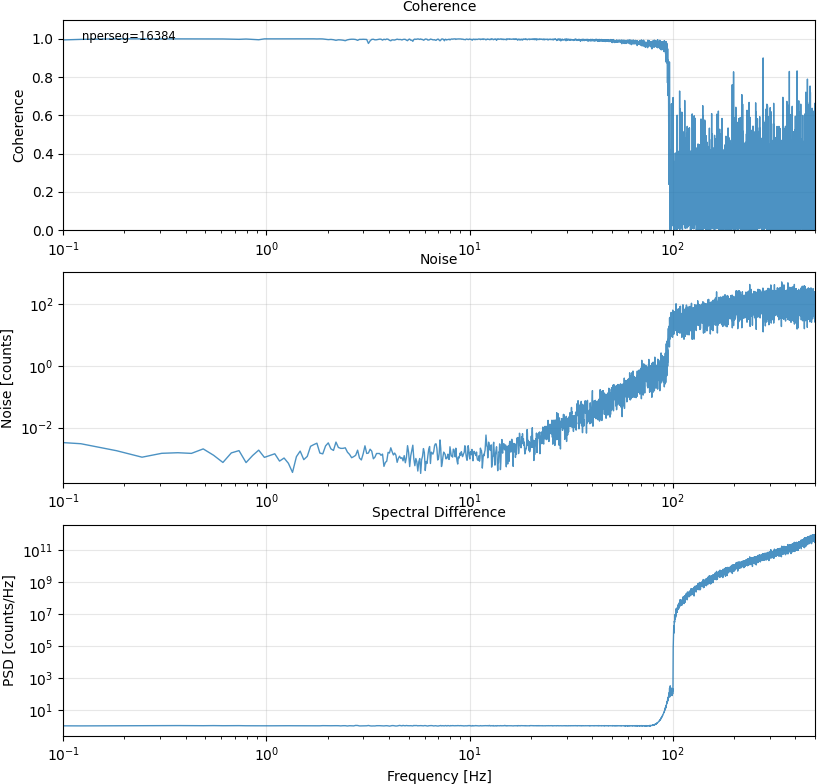Processing details¶
The command line tools take Silixa iDAS TDMS data as input. The data are loaded and converted to MiniSeed in an efficient manner.
The conversion tool makes heavy use of multi-threading and CPython extensions for parallel I/O and downsampling of the time series data. By this approach we try circumventing the bad threading performance of Python due to its GIL.

Simple treading architecture of idas-convert.¶
Quality Control (QC)¶
The conversion process has basic QC routines built-in
Data gap detection.
0-Value detection.
These events are logged and written to a Pyrocko marker file, which can be loaded into Pyrocko’s snuffler GUI for inspection.
Telegram bot¶
The Telegram Bot can monitor lengthy conversion sessions. It will report all warnings and give regularl status updated on the progress of the conversion.
Downsampling¶
Downsampling of the timeseries data uses an adaptive antialiasing FIR filter. The filter has a cut-off frequency of 75% Nyquist-frequency.

Antialiasing FIR filter response used for down-sampling the data.¶

Frequency analysis and comparison of converted 1 kHz data to downsampled 200 Hz MiniSeed timeseries.¶